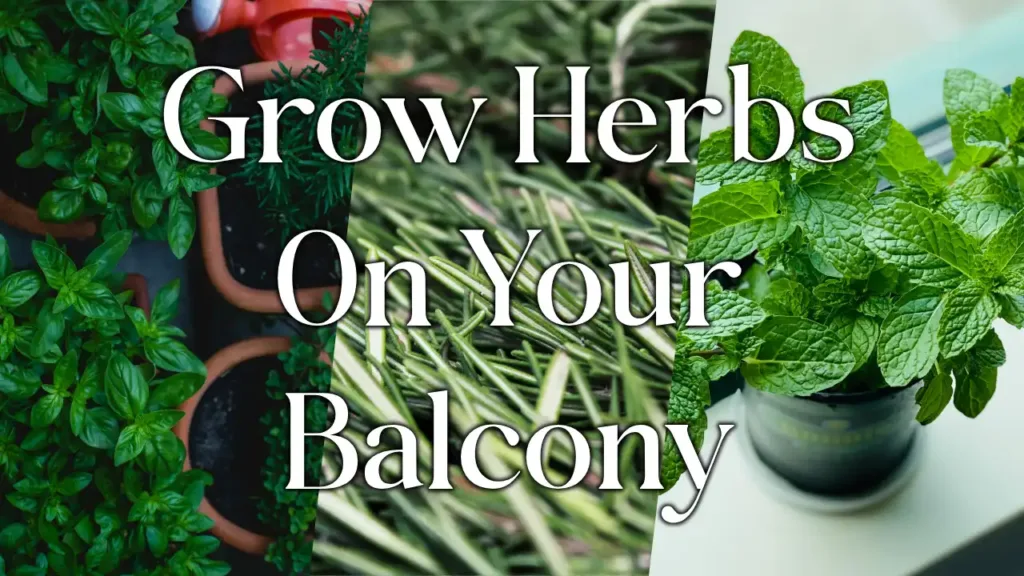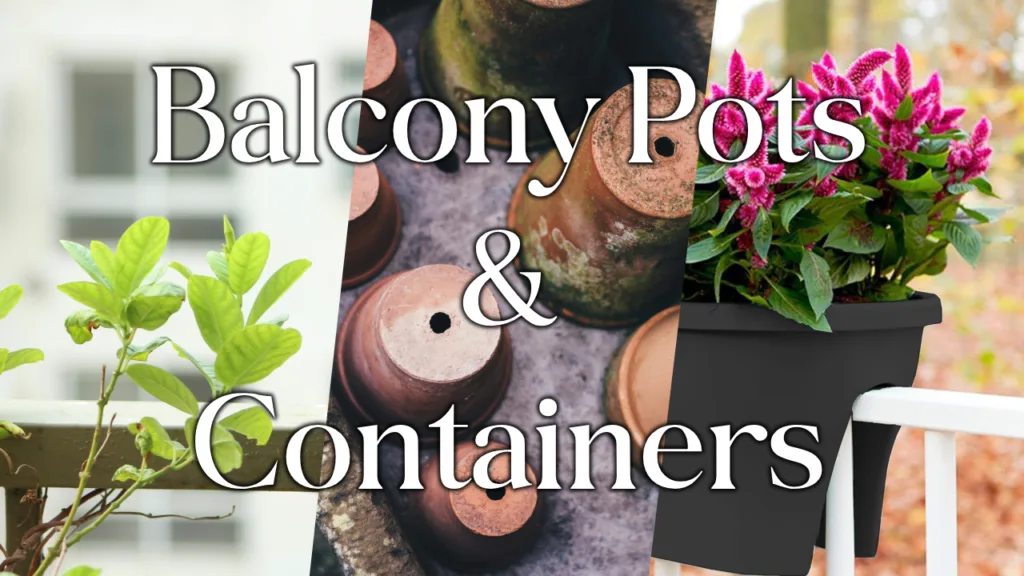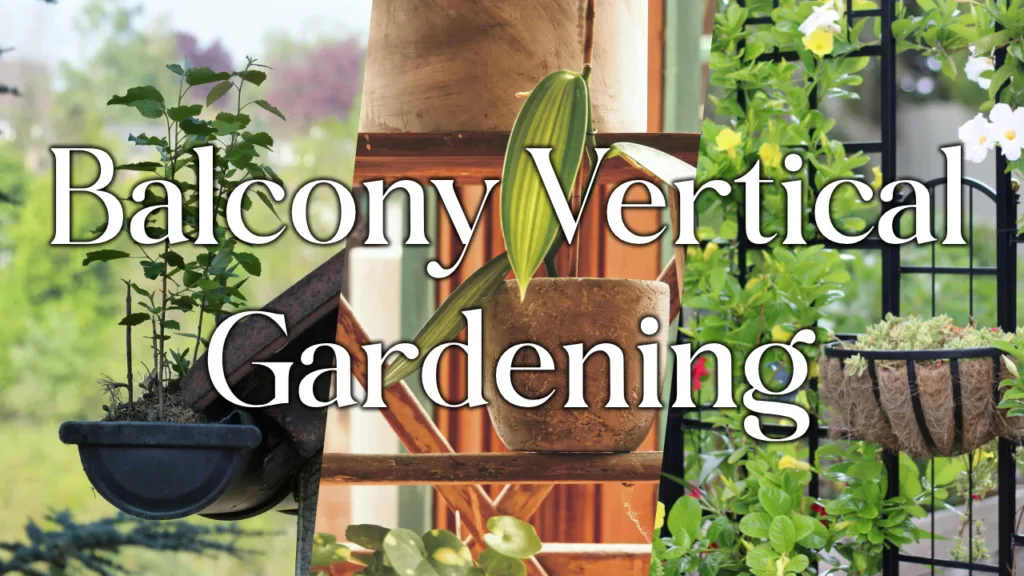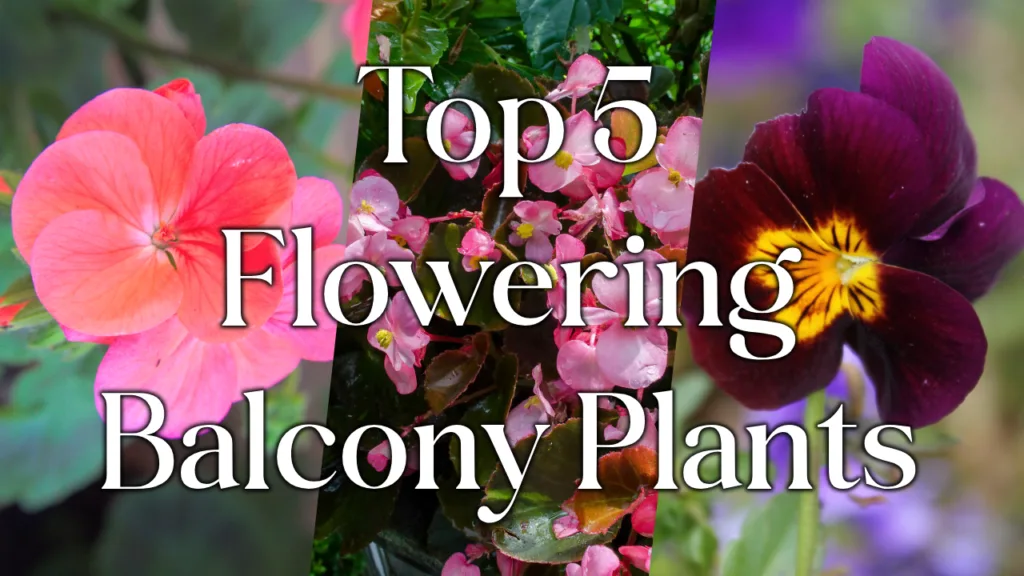Growing herbs on your balcony is one of the easiest and most rewarding ways to get into gardening – it’s how we did when we were living in our flat!
Balcony herb gardens are brilliant as not only do they provide fresh herbs for cooking, but they also add greenery into your living space. As a bonus, they’re also relatively low-maintenance, so it’s no wonder that they were voted the most popular plant type for vertical gardens.
In this article, we’re going to cover what you need to consider when creating a balcony herb garden and also the herbs that we would recommend to grow.
Contents
How To Make A Balcony Herb Garden
Before buying any plants for your herb garden, we’d recommend that you consider the types of containers and positioning of your plants to help them thrive.
Containers
Selecting the right containers for your plants is crucial for the success of your balcony herb garden. We’d recommend that you opt for pots that are slightly larger than the size of your herbs to prevent them from becoming too overcrowded.
When we started our apartment herb garden, we were gifted a window planter which attached to our rails. This was great as it left us more space on the floor for potted plants, and gave our herbs even more sunlight.
We’d also recommend that you consider the material of the pots you choose. While terracotta pots are incredibly popular, they tend to dry out the soil more quickly and add extra weight, which may limit the amount of pots that you can safely store on your balcony. If you’re interested in learning more about choosing the right pots for your balcony garden, we’d recommend that you read our article here.
Sunlight Access
It’s also important to understand whether you can give your herbs enough sunlight to grow to their full potential. In our experience, most herbs prefer full sunlight, which means at least six hours of direct sunlight per day. While having a shadier balcony doesn’t necessarily mean that you can’t grow herbs, it may take longer for your plants to grow.
How To Pot Your Herbs
Herbs are generally easy to grow, making them ideal for you if you’re new to gardening. The type of planter you choose will depend on the size of your outdoor space, but there are plenty of options to suit any balcony.
Before you can enjoy fresh herbs from your balcony, it’s essential to pot them correctly. Start by grouping plants with similar requirements, such as soil type, watering needs, and sunlight preferences. You can then fill your chosen pots with potting soil or a soilless mix, ensuring there is enough room for the roots to grow beneath the plant.
Gently remove the herb from its nursery pot, taking care to loosen the roots slightly. Place the herb into a prepared hole in the soil and fill in around it. Finally, water the soil thoroughly to help the herb settle into its new home. With these simple steps, your balcony herb garden will be off to a great start.
What Are The Best Herbs To Grow On A Balcony?
We’d recommend looking in your spice cabinet to choose which herbs to grow on your balcony, as they’re the ones you’ll benefit the most from having fresh access to.
When we started our balcony herb garden, we grew mint, basil, parsley, thyme and rosemary as these were the herbs we used the most for our cooking.
Below is a list of our top balcony garden herbs that can get you started.
Basil
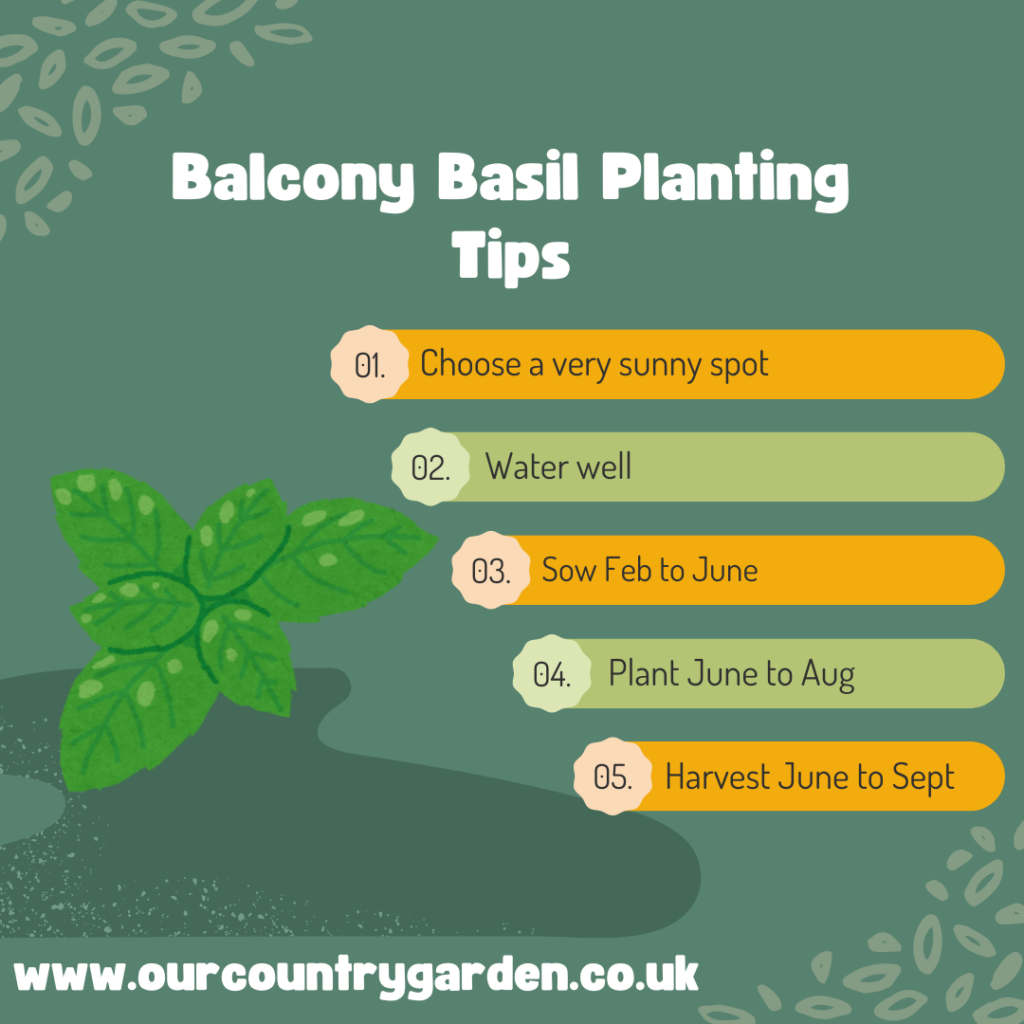
Basil is an annual herb known best for its beautiful smelling leaves and is a great addition to many dishes. In our experience, basil grows to be around 30cm tall as long as it’s positioned in a sunny space and watered frequently.
Chives
Chives are perennial herbs, meaning that the plant should last for multiple seasons. It has slender green leaves and beautiful purple flowers that the bees love.
Like basil, chives normally grow to around 30cm tall as long as they’re positioned in a sunny space and watered frequently.
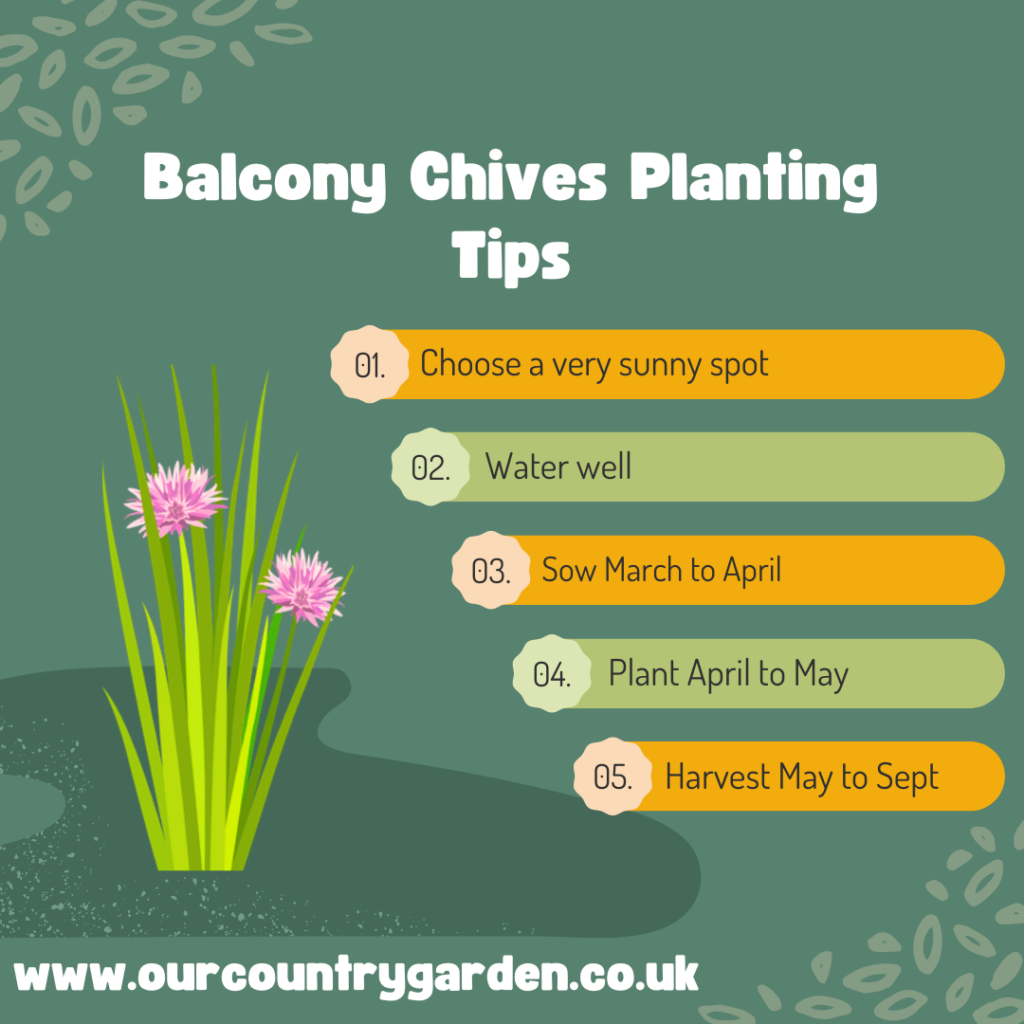
Oregano
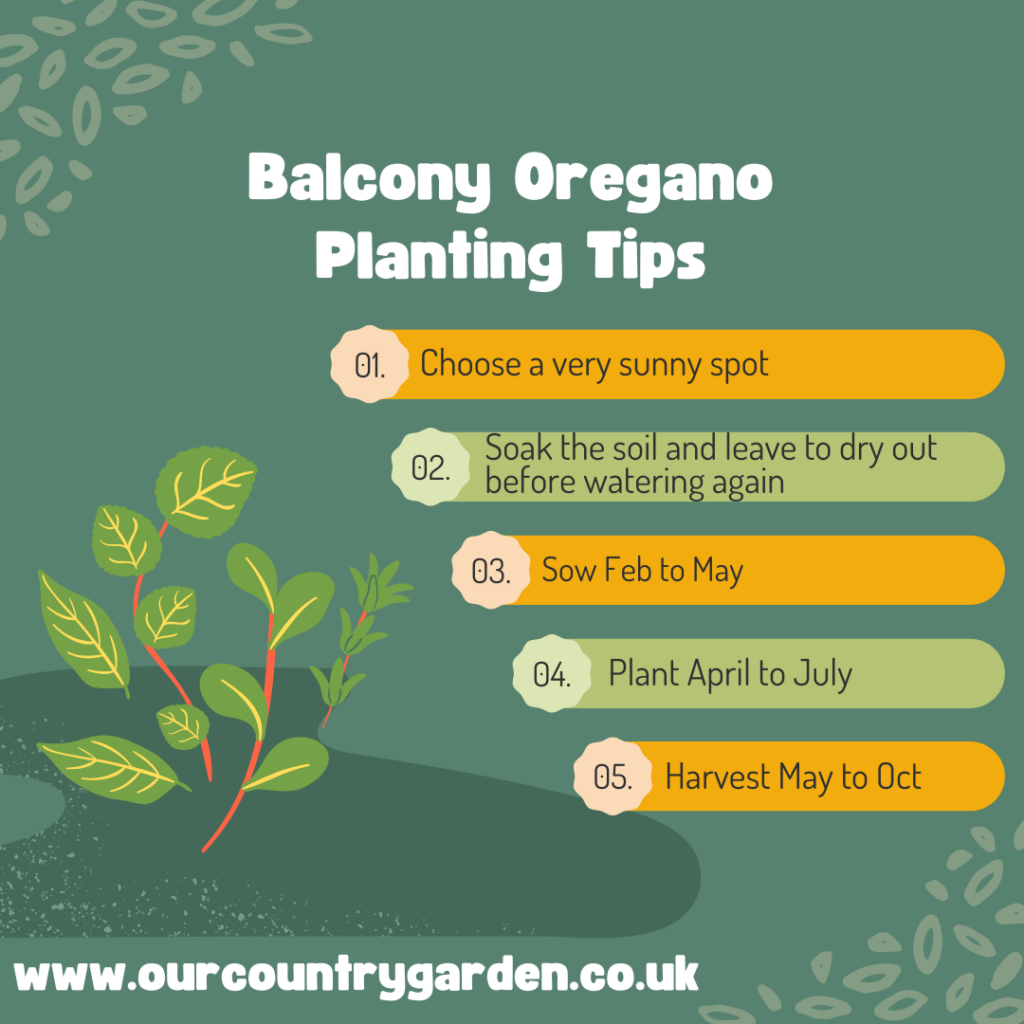
Oregano is a perennial herb known for its culinary uses and aromatic foliage. It grows to between 30 and 50cm and needs full sun exposure in order to grow well.
Oregano should be watered regularly, allowing the soil to completely dry out between waterings.
Rosemary
Rosemary is a perennial herb known for its woody stems and aromatic foliage used in cooking and aromatherapy.
As one of our favourite herbs in our herb garden, it prefers full sun and requires regular watering, with the soil being completely dried out between waterings.
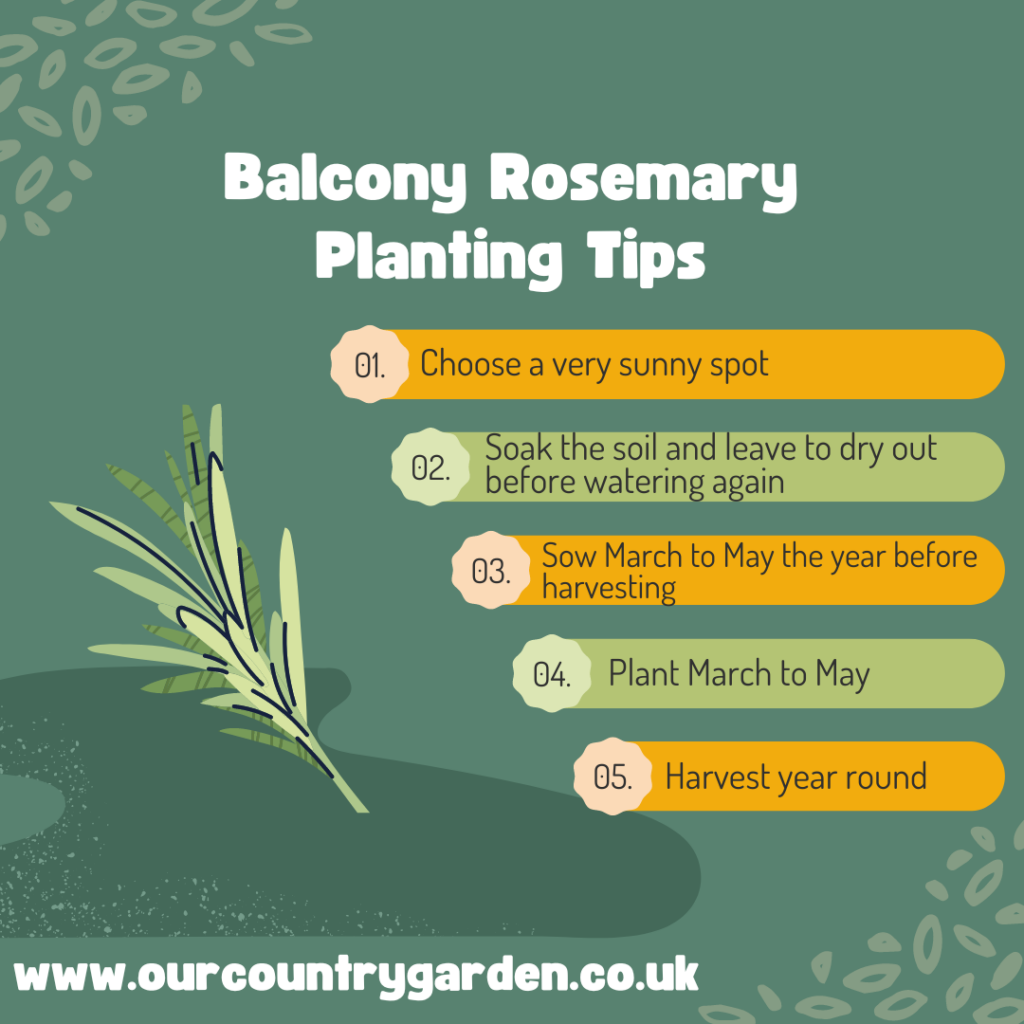
Parsley
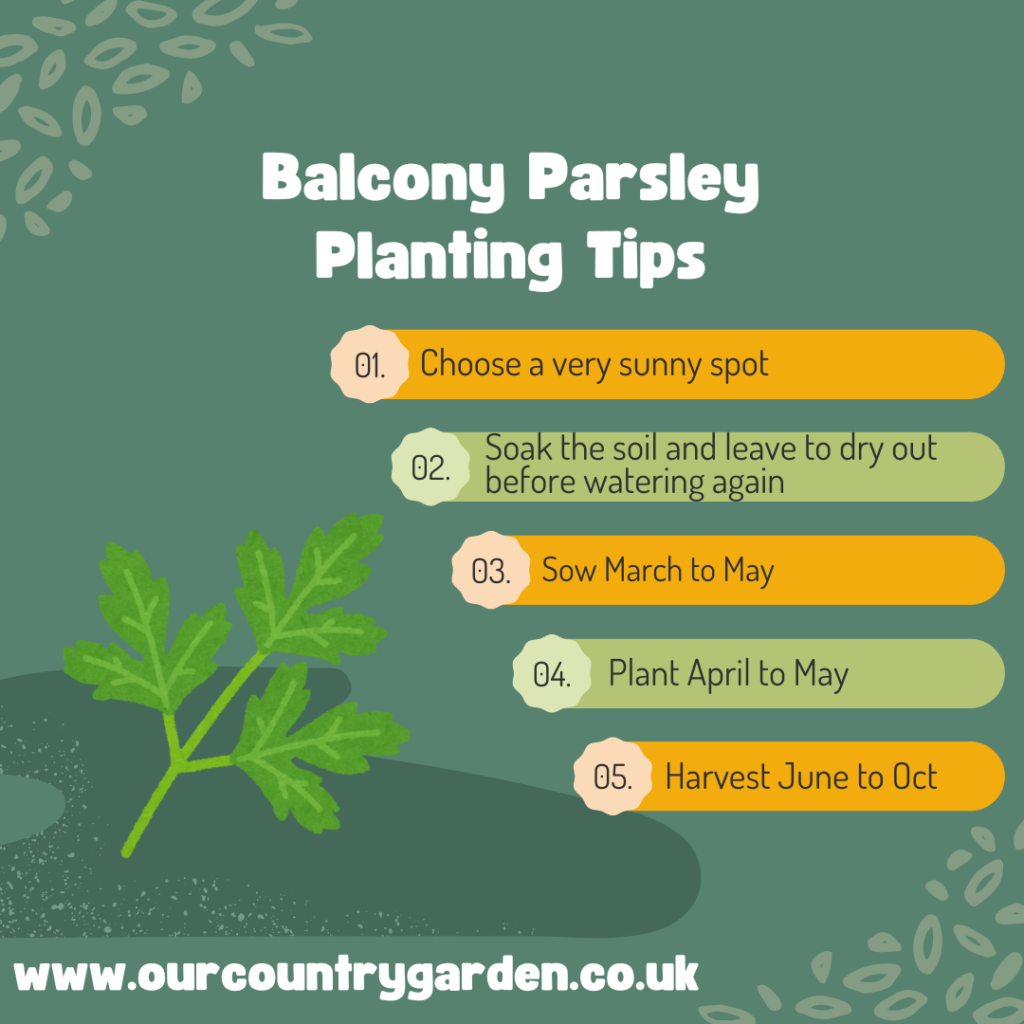
Parsley is a biennial herb, meaning that it grows for 2 years. It’s widely used in cooking for its fresh flavour and vibrant green leaves.
While parsley thrives in a sunny position, we’ve found that it can tolerate partial shade, although it may not grow as prolifically. Parsley requires regular watering, with the soil being allowed to dry out completely between waterings.
Thyme
Thyme is a perennial herb with small, aromatic leaves. It grows to between 30 and 40cm and prefers to be in full sunlight.
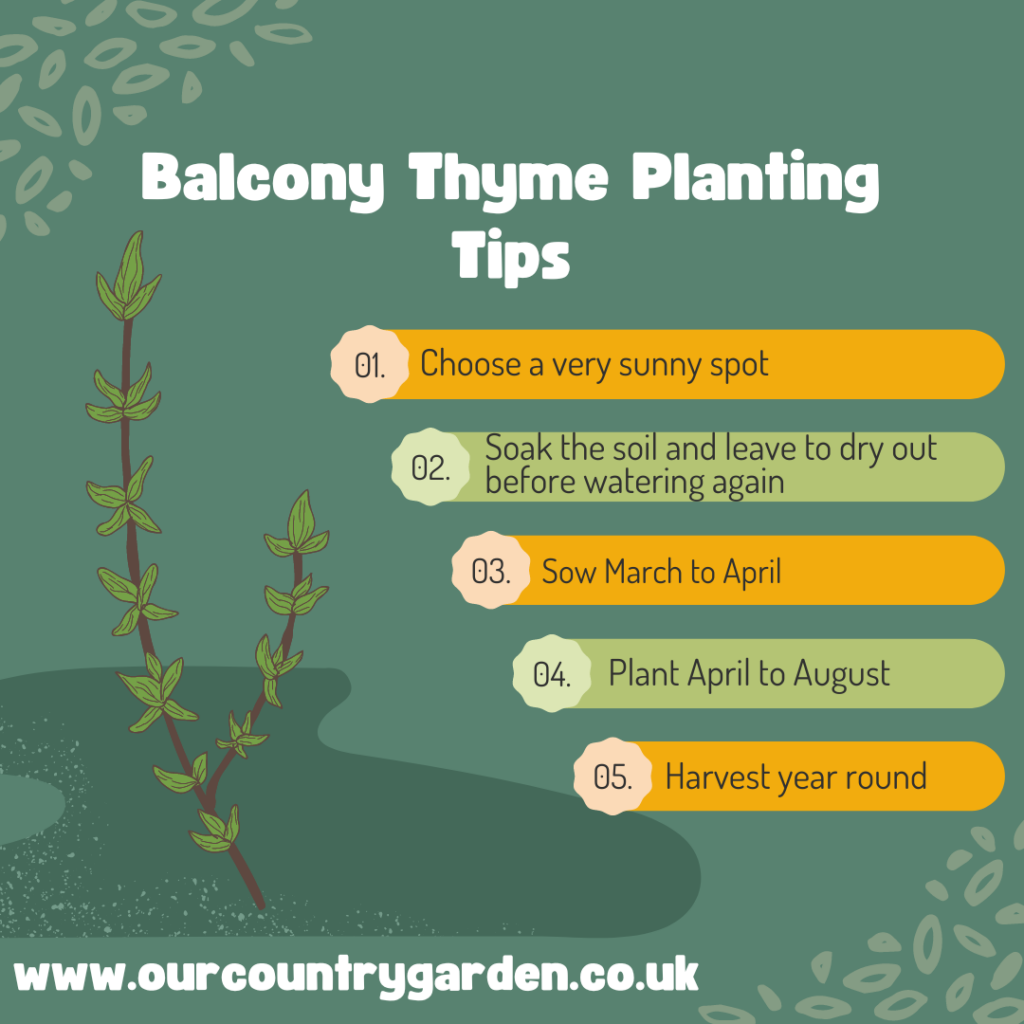
Mint
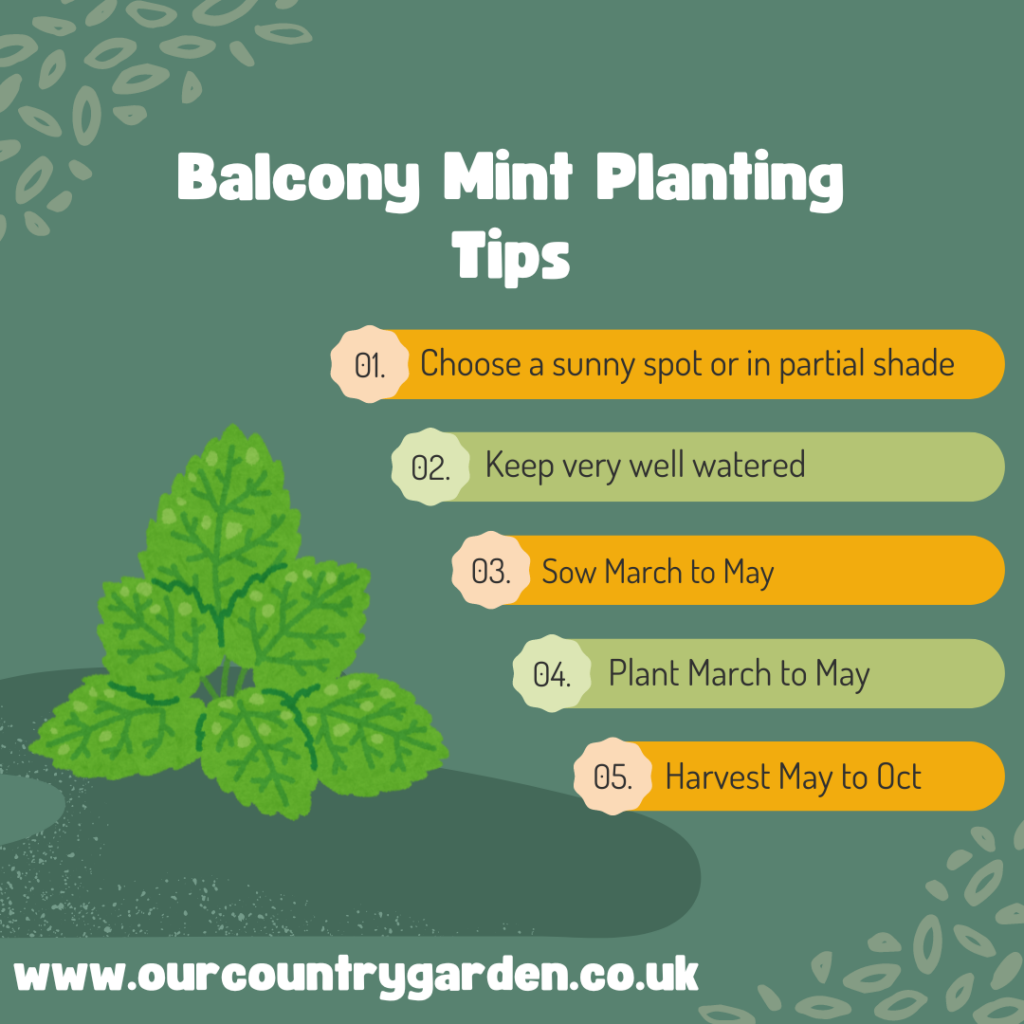
Mint is one of the fastest-growing herbs in our apartment garden. With a refreshing scent and growing up to 60cm tall, it’s a great addition to your balcony garden.
Mint thrives in partial to full sunlight, and needs consistently moist soil – from our experience you can’t water mint too much!
Balcony Herb Planter Ideas
If you’ve been wanting to start a herb garden for your apartment balcony, then here’s some inspiration to get you started. Alternatively, you can get started growing your herbs indoors, by clicking here.

Herbs being grown out of see-through jars, showing that you can even create a herb garden for a small balcony space. (Source)

A DIY vertical garden herb planter to maximise the amount of produce in your space. (Source)

A beautiful hanging pot herb garden is a great way to add some vertical interest to your apartment’s balcony. (Source)

Using old tin cans to hold your herbs is a great way to add extra interest to your produce and is something we’ve done a number of times in our garden. (Source)
Top Tips For Creating a Balcony Herb Garden
To help you get started with creating a herb garden on your balcony, we’ve compiled a list of tips that we wish we knew when we started growing!
Sunlight
Sunlight is possibly the most crucial element of a thriving balcony herb garden. While some herbs can grow in partial shade, most will flourish in direct sunlight, so it’s important to position your herb garden on a sunny balcony or window.
Pruning
Pruning your herbs encourages them to grow back bushier and prevents excessive flowering or seeding. If you’re using your herbs for cooking, this will happen naturally as you harvest leaves. However, if you’re not using a particular herb for a few months, we’d recommend giving it a trim any to encourage better future growth.
Watering
It’s really important to keep your herbs well watered so they don’t dry out. Typically, watering once a week is sufficient, however during extreme weather, such as heatwaves, you may need to water more regularly.
Planting Seedlings
Once established, herbs grow throughout the year no matter the weather. However, if you’re planting seedlings, we’d recommend doing so in early spring to help your new plant to thrive.
Choose The Right Containers
Choosing the right containers is crucial for maintaining healthy growth. Mint, for example, is an extremely vigorous grower and should always be kept in its own container to prevent it from spreading uncontrollably.
If you’re looking for more information on which container you should use on your balcony, take a look at our complete guide here.
Conclusion
So there we have it, if you’ve been wondering how to grow herbs on a balcony, we’ve got you covered. If you’d like to add some flowers to your balcony garden too, take a look at our recommendations here. Alternatively, take a look at how you can make your balcony even more productive with our balcony vegetable guide and balcony berry guide.

